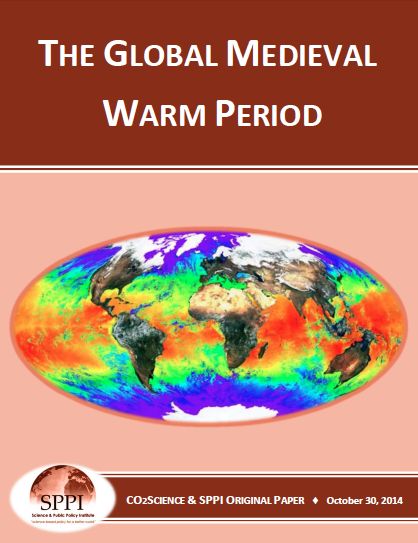News / Science & Technology
The Global Medieval Warm Period
Center for the Study of Carbon Dioxide and Global Change. "The Global Medieval Warm Period.” Last modified October 30, 2014. http://www.co2science.org/subject/g/summaries/globalmwp.php.

Between the 10th and 14th centuries AD, earth's average global temperature may have been warmer than it is today, according to the analyses of Lamb (1977, 1984, 1988) and Grove (1988). The existence of this Medieval Warm Period was initially deduced from historical weather records and proxy climate data from England and Northern Europe. Interestingly, the warmer conditions associated with this interval of time are also known to have had a largely beneficial impact on earth's plant and animal life. In fact, the environmental conditions of this time period have been determined to have been so favorable that it was often referred to as the Little Climatic Optimum (Imbrie and Imbrie, 1979; Dean, 1994; Petersen, 1994; SerreBachet, 1994; Villalba, 1994).
The degree of warming associated with the Medieval Warm Period varied from region to region; and, hence, its consequences were manifested in a number of different ways (Dean, 1994). In Europe, temperatures reached some of the warmest levels of the last 4,000 years, allowing enough grapes to be successfully grown in England to sustain an indigenous wine industry (Le Roy Ladurie, 1971). Contemporaneously, horticulturists in China extended their cultivation of citrus trees and perennial herbs further and further northward, resulting in an expansion of their ranges that reached its maximum extent in the 13th century (De'er, 1994). Considering the climatic conditions required to successfully grow these species, it has been estimated that annual mean temperatures in the region must have been about 1.0 °C higher than at present, with extreme January minimum temperatures fully 3.5 °C warmer than they are today (De'er, 1994).
In North America, tree-ring chronologies from the southern Canadian Rockies have provided evidence for higher treelines and wider ring-widths between AD 950 and 1100, suggesting warmer temperatures and more favorable growing conditions (Luckman, 1994). Similar results have been derived from tree-ring analyses of bristlecone pines in the White Mountains of California, where much greater growth was recorded in the 11th and 12th centuries (Leavitt, 1994). By analyzing 13C/12C ratios in the rings of these trees, it was also found that soil moisture conditions were more favorable in this region during the Medieval Warm Period (Leavitt, 1994). Simultaneous increases in precipitation were additionally found to have occurred in monsoonal locations of the United States desert southwest, where there are indications of increased lake levels from AD 700-1350 (Davis, 1994).
